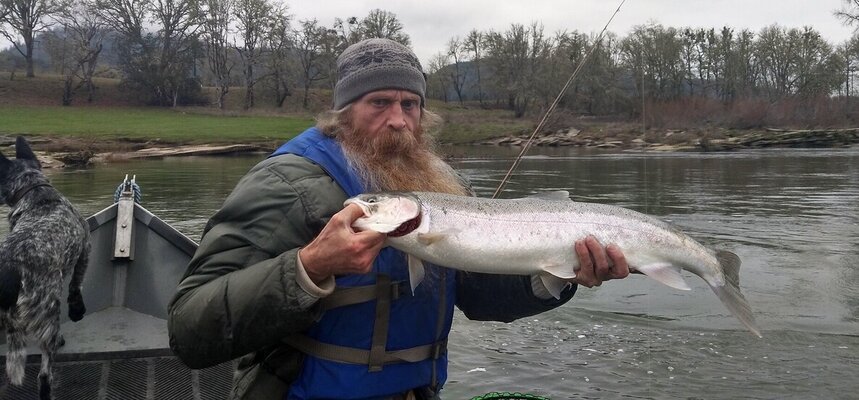
Winter steelhead fishing in Oregon is an angler's dream, offering the thrill of the catch against the backdrop of the state's stunning, frosty landscapes. The rivers that carve through Oregon's terrain become prime habitats for steelhead from December through March, attracting fishing enthusiasts eager to brave the cold for the chance at hooking one of these elusive fish. This article delves into the intricacies of winter steelhead fishing in Oregon, covering essential gear, techniques, prime fishing spots, and conservation considerations to ensure both a successful and sustainable fishing experience.
Introduction to Winter Steelhead
Steelhead, the migratory form of rainbow trout, return to their natal Oregon rivers in winter, showcasing remarkable resilience and strength. Unlike their salmon cousins, steelhead can spawn multiple times, making them a particularly fascinating target for anglers. The winter run, known for its larger, more aggressive fish compared to the summer run, offers a unique challenge, with steelhead navigating the cold, often turbulent waters of Oregon's rivers.Understanding Steelhead Behavior
Successful winter steelhead fishing begins with an understanding of the fish's behavior. Winter steelhead tend to move during periods of rising water levels, often triggered by rain. They seek resting spots in slower-moving water after navigating faster currents. Recognizing these patterns helps anglers choose the right times and locations to fish, increasing the chances of a catch.Essential Gear and Tackle
The right gear is crucial for winter steelhead fishing, not just for effectiveness but also for safety and comfort in cold conditions. Key items include:- Rod and Reel: A medium to heavy action rod paired with a durable reel designed for cold weather use. Spinning or baitcasting setups are popular, depending on personal preference and technique.
- Line and Leader: High-quality, abrasion-resistant line is essential, with leaders strong enough to withstand the fight of a steelhead but light enough to not spook the fish.
- Waders and Boots: Waterproof, insulated waders and sturdy, slip-resistant boots are crucial for staying dry and safe on slippery riverbanks.
- Lures and Baits: Jigs, spoons, spinners, and bait such as cured salmon eggs are effective in attracting winter steelhead. The choice of lure or bait can depend on water clarity and flow.
Techniques for Winter Steelhead Fishing
Several techniques can be effective for winter steelhead, each with its own set of strategies:- Drift Fishing: This popular technique involves casting upstream and letting the bait or lure drift naturally with the current, mimicking the movement of a steelhead's prey.
- Bobber and Jig: Fishing with a bobber and jig allows for precise control over the depth, making it an effective method in varied river conditions.
- Plunking: Best used in high water conditions, plunking involves casting bait or lures into a stationary position, waiting for steelhead to move upstream.
- Fly Fishing: While challenging in winter conditions, fly fishing for steelhead can be rewarding, utilizing larger, brighter flies to attract fish in murky waters.
Prime Winter Steelhead Fishing Locations in Oregon
Oregon boasts numerous rivers that are renowned for their winter steelhead runs. Some of the most notable include:- The North Umpqua River: Famous for its challenging fishing and beautiful scenery, the North Umpqua offers a world-class winter steelhead experience.
- The Rogue River: Offering both bank and boat fishing opportunities, the Rogue River's winter steelhead run is one of the most anticipated in the state.
- The Wilson River: Close to Portland, the Wilson River is a popular choice for anglers, known for its accessibility and healthy steelhead population.
- The Sandy River: Offering proximity to urban areas and a robust winter steelhead run, the Sandy River is a favorite among Portland anglers.